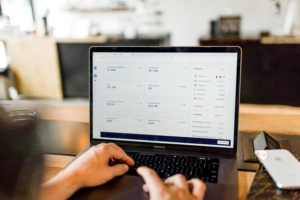Behind the buzz of PLG is a real and sustainable movement that aims to redefine best-in-class SaaS go-to-market and product strategy
May 2022
Author: Bryan Belanger
May 2022
Author: Bryan Belanger

You’ve probably already heard of product-led growth (PLG) unless, (a) you aren’t actively involved in or watching the SaaS world, or (b) you are in the SaaS world but live under a rock.
PLG has become a trendy buzzword in the SaaS ecosystem. Behind the buzz, however, is a real and sustainable movement that aims to redefine best-in-class SaaS go-to-market and product strategy. At its core, PLG emphasizes placing the product at the center of a company’s strategy and using the product as the centrifuge of that company’s go-to-market and customer acquisition and engagement motions. Sales and operational processes are designed around the product.
For a more detailed definition of PLG, I recommend reading this post from the Product-Led Collective as well as this blog from Ibbaka. The former describes the origins of PLG and the ideology behind the modern implementation of the PLG strategy. The latter provides a helpful chart that breaks down the core building blocks of a PLG strategy.
PLG is much broader than pricing, but pricing is core to a PLG strategy. PLG is often discussed hand in hand with usage-based pricing (UBP), particularly by PLG and UBP advocates OpenView Venture Partners. (OpenView Partner Blake Bartlett coined the term product-led growth in 2016.) OpenView and others espouse UBP as an enabler of a best practice PLG strategy. PLG approaches focus on offering customers low or no costs of entry, early value capture, and cost growth that is aligned to usage growth. UBP, then, is theoretically directly aligned to PLG strategy.
This line of thinking led us to a research question that we decided to explore: If UBP is so effective for PLG, how much are leading PLG companies using UBP models?
The absolute best source of curated market data on PLG companies that we’ve found is PeerSignal. PeerSignal maintains a dataset on 500+ PLG companies as well as 750+ B2B growth companies, covering metrics and topics such as headcount by role, hiring activity, go-to-market strategies, commercial offers, pricing pages, content and community strategy, and social followings. The company also produces recurring, highly insightful analysis on trends it sees in the data.
So naturally, when this PLG-UBP pricing question cropped up, we immediately thought of PeerSignal. We reached out to PeerSignal, and after some discussion, we decided to collaborate on a deep dive of 125 focus companies within PeerSignal’s PLG cohort to explore what we could learn about pricing models.
To do this, we mashed together our pricing-specific XaaS Pricing data (over 3,000 unique product-level records) with PeerSignal’s company data, focusing on a handful of key topics related to how PLG companies approach UBP. These topics included:
By this point, you’re probably saying, “OK, we get it, XaaS Pricing and PeerSignal nerded out over some SaaS company pricing data. Quit stalling and give us the juicy stuff!”
You can read the full report on our findings here, as well as access the PeerSignal and XaaS Pricing data that powered the analysis.
There’s lot to chew on in this links, and the findings might surprise you, or at least help you separate the buzz from the reality. Hopefully you’ll walk away with some ideas on a digestible, tactical path forward to a PLG strategy that leverages a UBP or UBT approach.
This blog is the first in a series of collaborative reports between XaaS Pricing and PeerSignal that explores pricing trends in PLG and high-growth B2B SaaS companies. Become an Insider to be notified of the next report as soon as it’s available as well as to receive early access to upcoming blogs, monthly and quarterly trend reports, free downloadable templates and more from XaaS Pricing!
 ©2022 XaaS Pricing. All rights reserved. Terms of Service | Website Maintained by Tidal Media Group
©2022 XaaS Pricing. All rights reserved. Terms of Service | Website Maintained by Tidal Media Group

 How to choose the right competitors for competitive pricing analysis
How to choose the right competitors for competitive pricing analysis